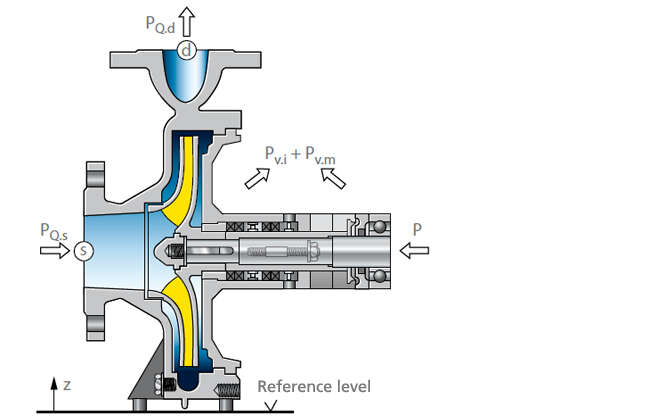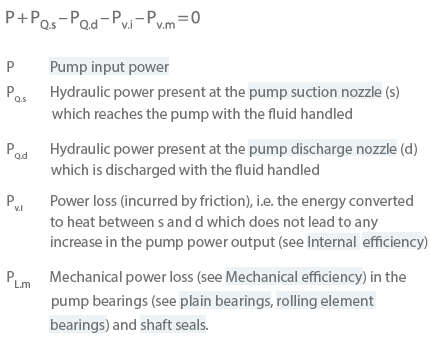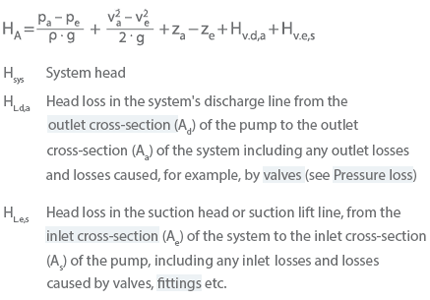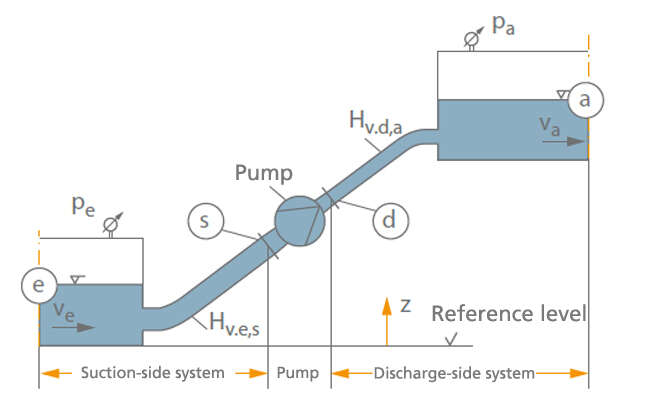Head
This term is an important energy concept (DIN EN ISO 17769-1) in centrifugal pump engineering. A distinction must be made between the pump head and the system head.
The pump head is the hydraulic power or pump output power (PQ) transmitted to the fluid handled relative to ρ · g · Q.

The sum of all power (positive input, negative output) represented by the pump power output (PQ) must be zero within the boundaries of the system. See Fig. 1 Head

Fig. 1 Head: Explanation of the pump power output PQ = PQ.d – PQ.s = P – Pv.i – Pm

If the expression PQ.d – PQ.s represents the pump power output (PQ), the useful power output is as follows:

According to BERNOULLI (see Fluid mechanics) the equation for useful power output is:

For the pump head, this means:

If the fluid handled is compressible, the value for density (ρ) should be defined as the arithmetic mean of the density at the pump discharge nozzle and the density at the pump suction nozzle:

The system head can be established in a similar manner, taking into account the head losses (HL):

The term geodetic head (Hgeo) is sometimes used to designate the system head. It refers to the difference in elevation, or height, between the system's outlet cross-section (Aa) and the system's inlet cross-section (Ae):

Under steady-state conditions (rotational speed (n) = constant), the pump head is equal to the system head.

The unit of head is metres (m). The following expressions are also used in conjunction with the term head.
Heads and their significance
- Head at BEP (Hopt): pump head at the best efficiency point
- Nominal head (HN): pump head for which the pump has been designed
- Upper head limit (Hmax): max. permissible head at which the pump can be continuously operated without suffering damage
- Lower head limit (Hmin): min. permissible head at which the pump can be operated without suffering damage
- Shut-off head (H0): head for a flow rate Q = 0 m3/s
- Peak head (Hpeak): head at apex (relative maximum) of an unstable H/Q curve, see Fig. 4 Characteristic curve
- Static head (HA,0 or Hstat): the portion of the system head (see System characteristic curve and Characteristic curve) which is independent of the flow rate (Q)


Fig. 2 Head: Illustration of the magnitudes relating to the system head Hsys
